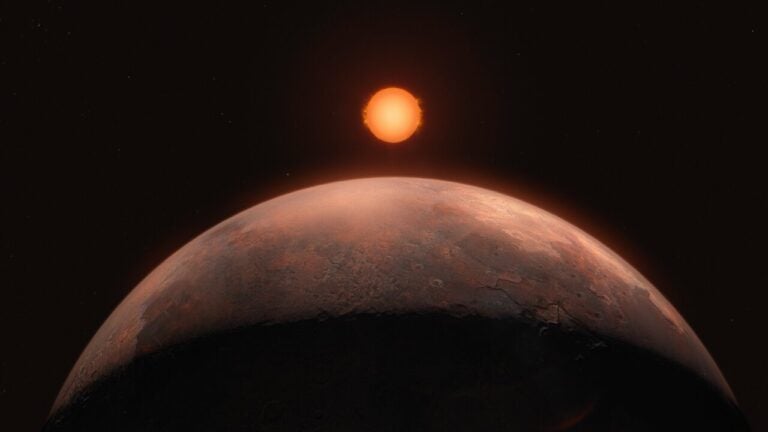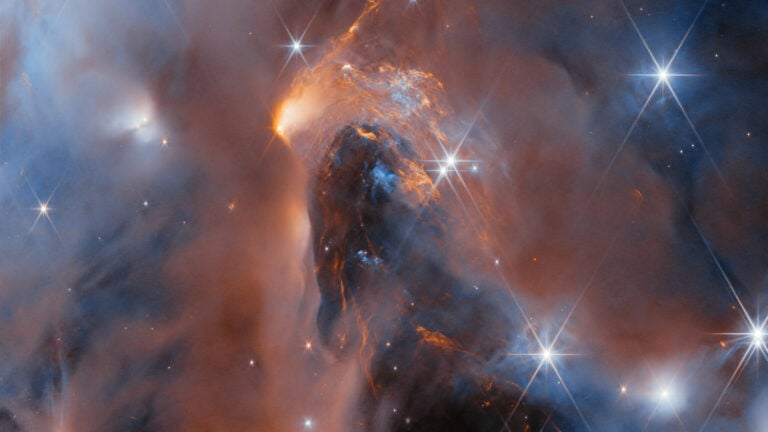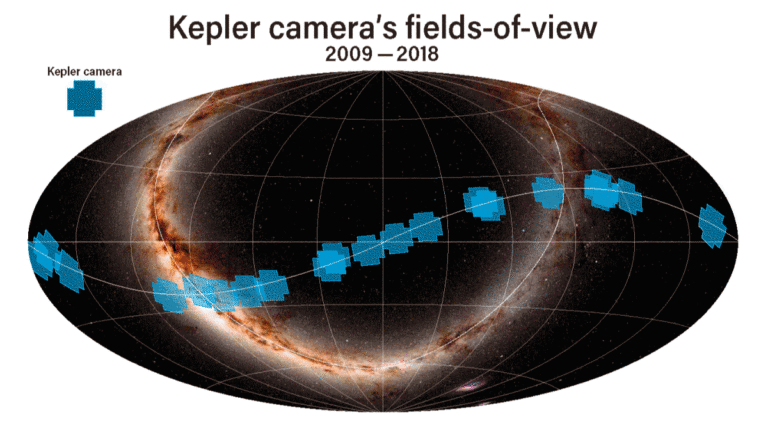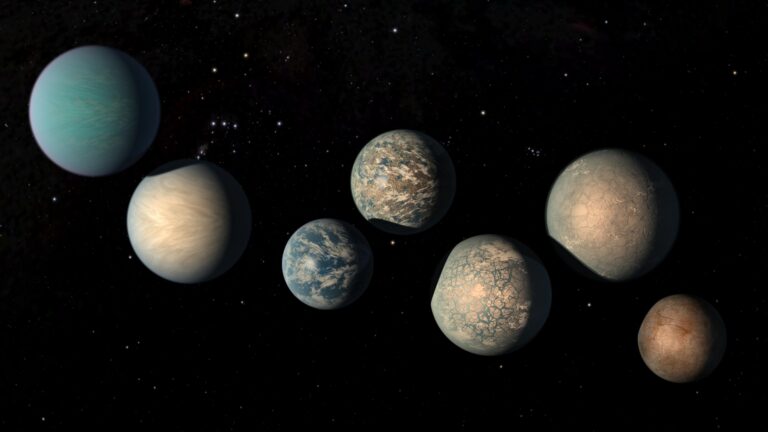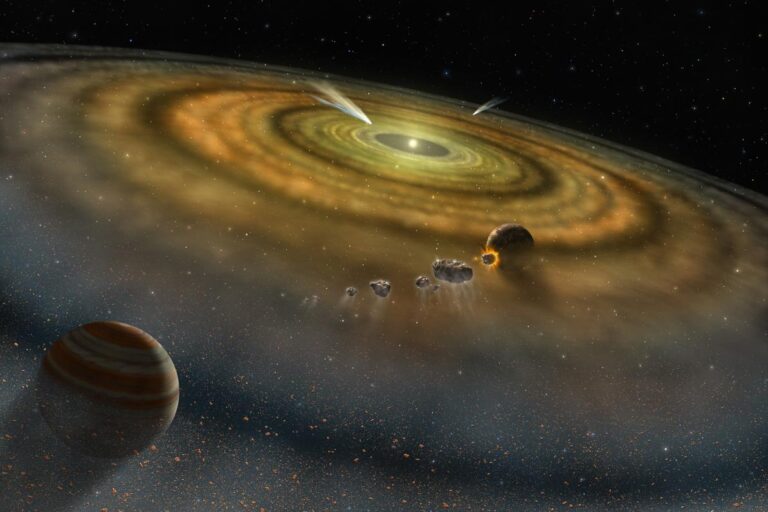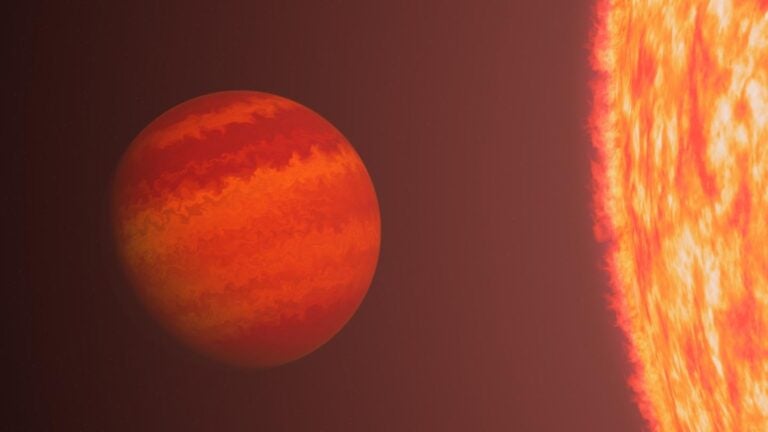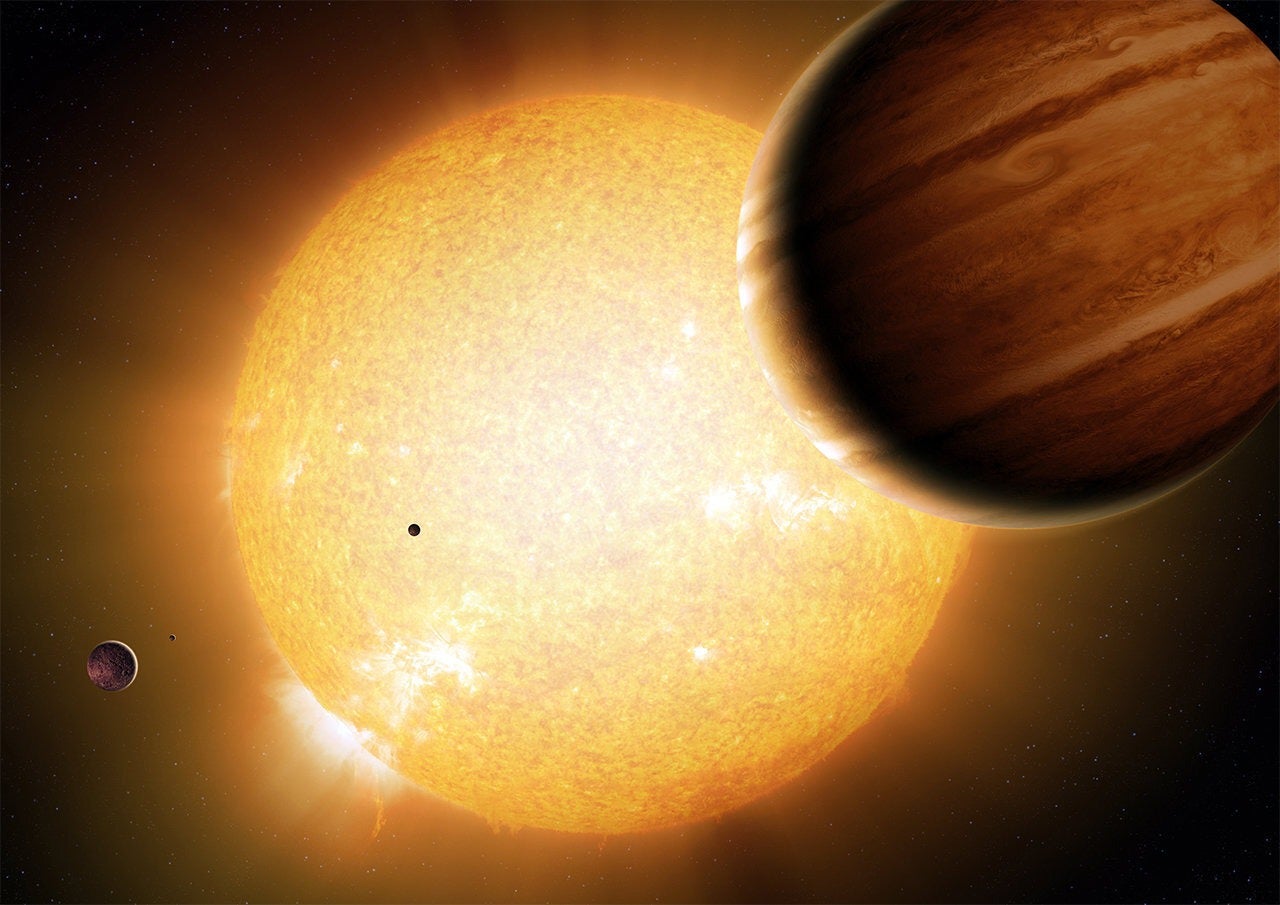So far, more than 90 percent of the planets discovered outside our solar system have been found by the radial-velocity technique. In this method, astronomers observe light from a star and search for periodic variations in its motion toward and away from Earth. Such variations reflect the subtle pull of an orbiting planet. By careful study over a long period of time, scientists even can deduce the presence of multiple planets around a single star.
Three other techniques have turned up a handful of planets to date. In the transit method, astronomers look for a slight, periodic dimming in a star’s light, which indicates an orbiting planet passing in front of the star and blocking a small percentage of its light. In the microlensing method, astronomers monitor stars in the Milky Way’s halo or in neighboring galaxies. They look for a brightening caused by gravitational lensing as a planet passes between us and the distant star. Finally, four planets have turned up in precise measurements of the radio pulses emanating from pulsar PSR B1257+12. In the coming years and decades, these and other methods will continue to push the frontier until, one day, scientists presumably will find worlds much like Earth.


